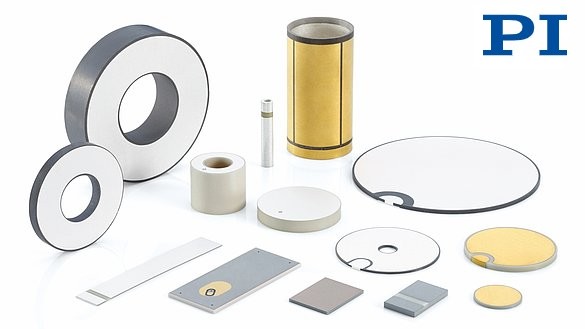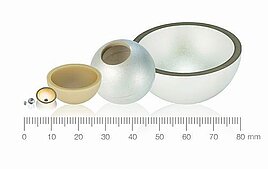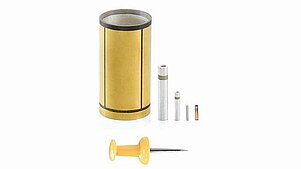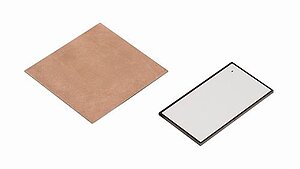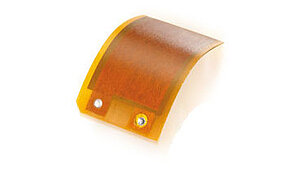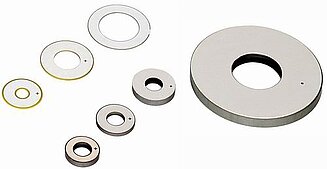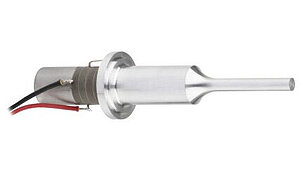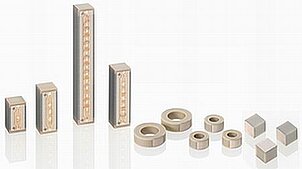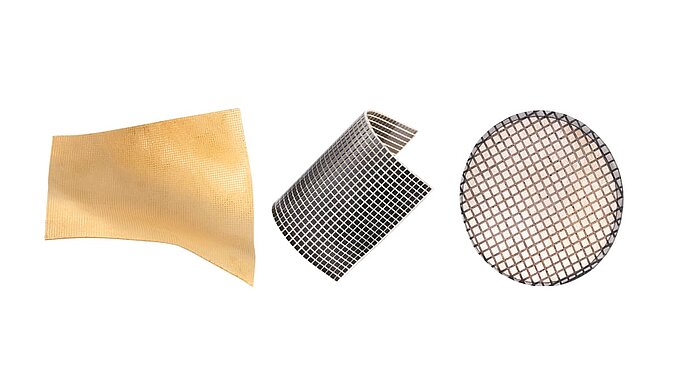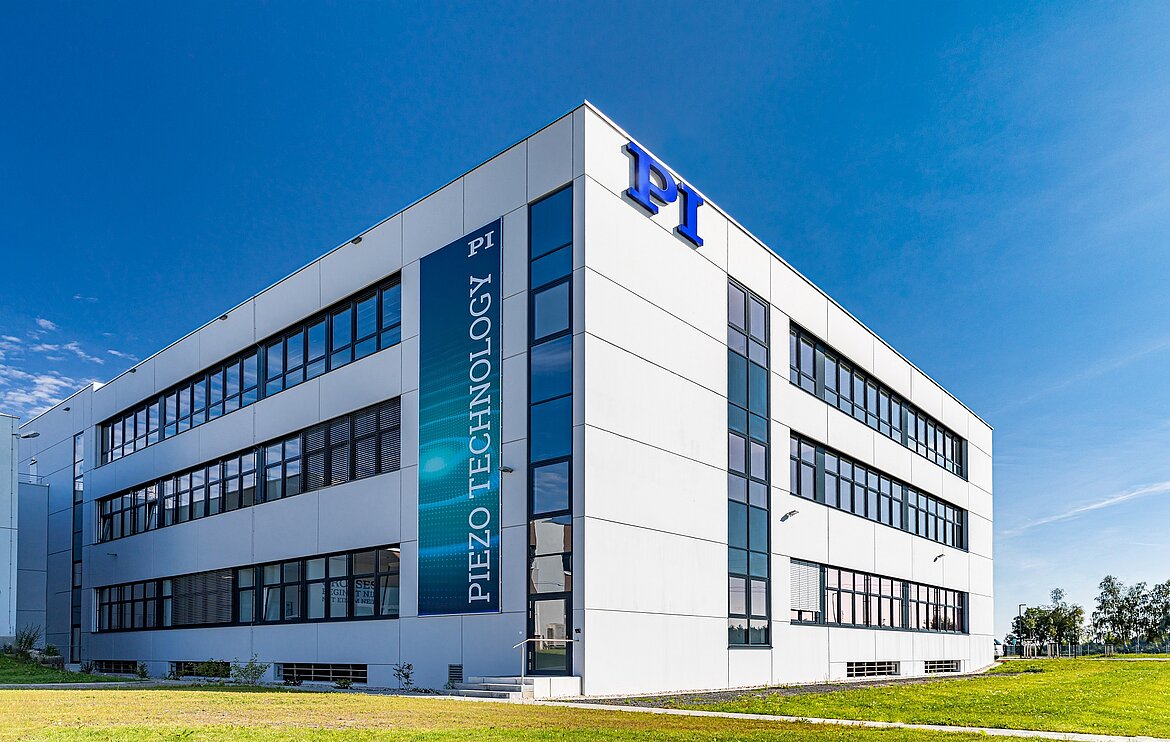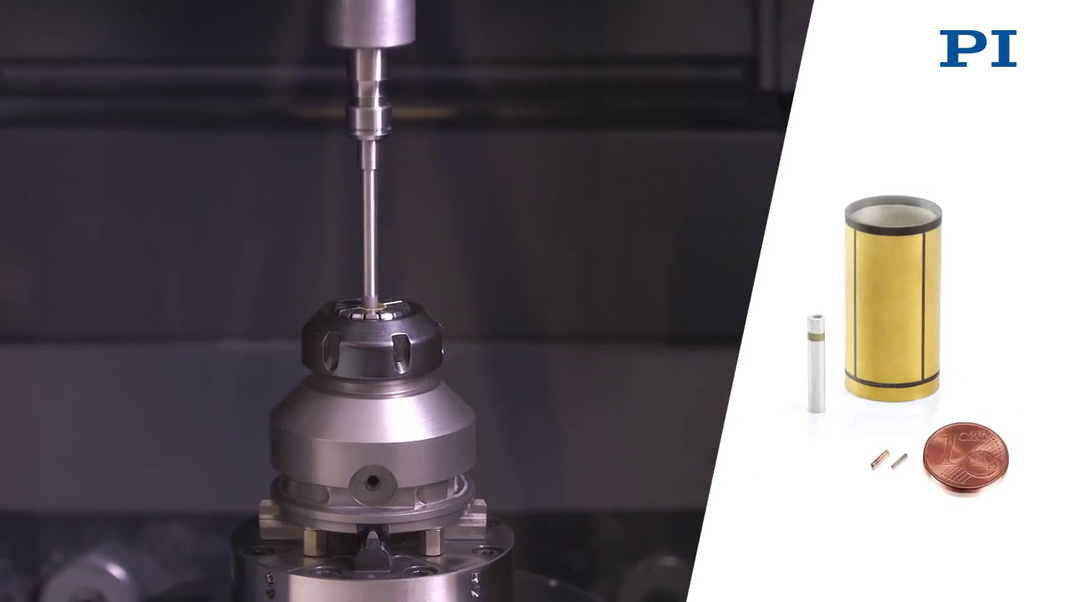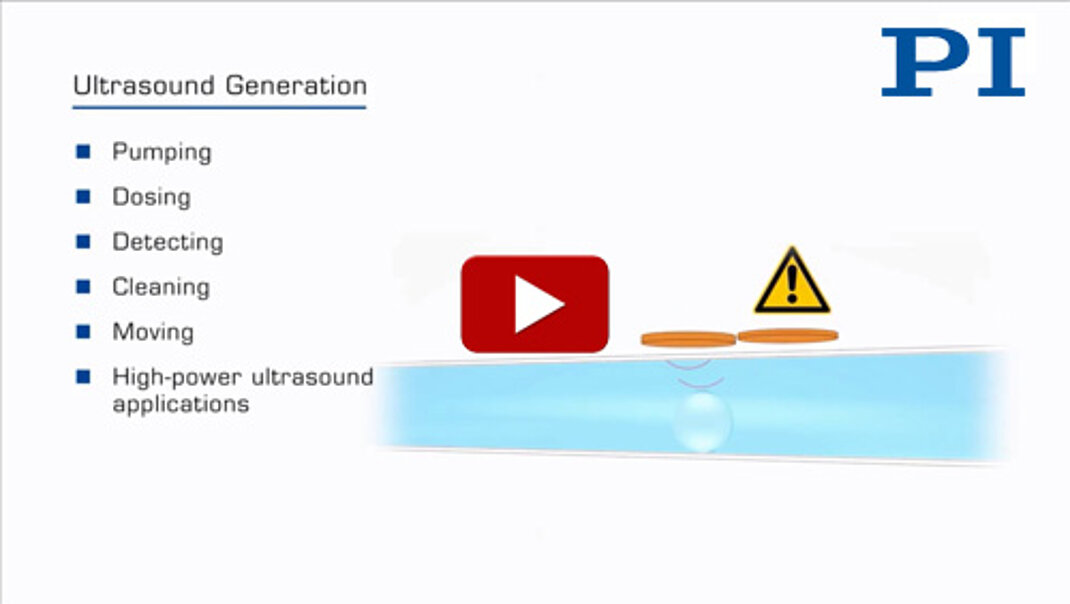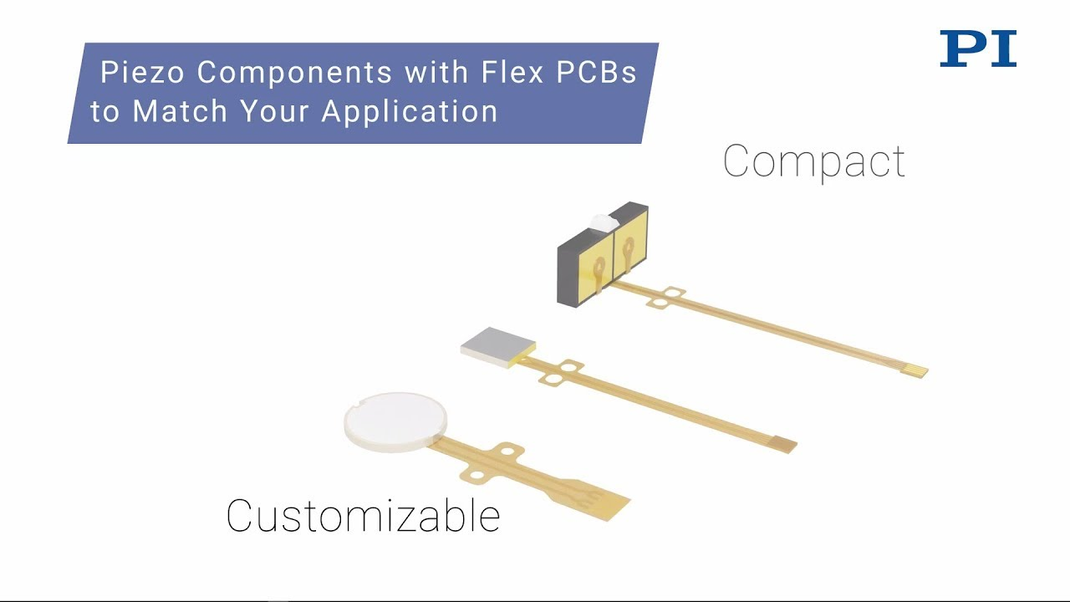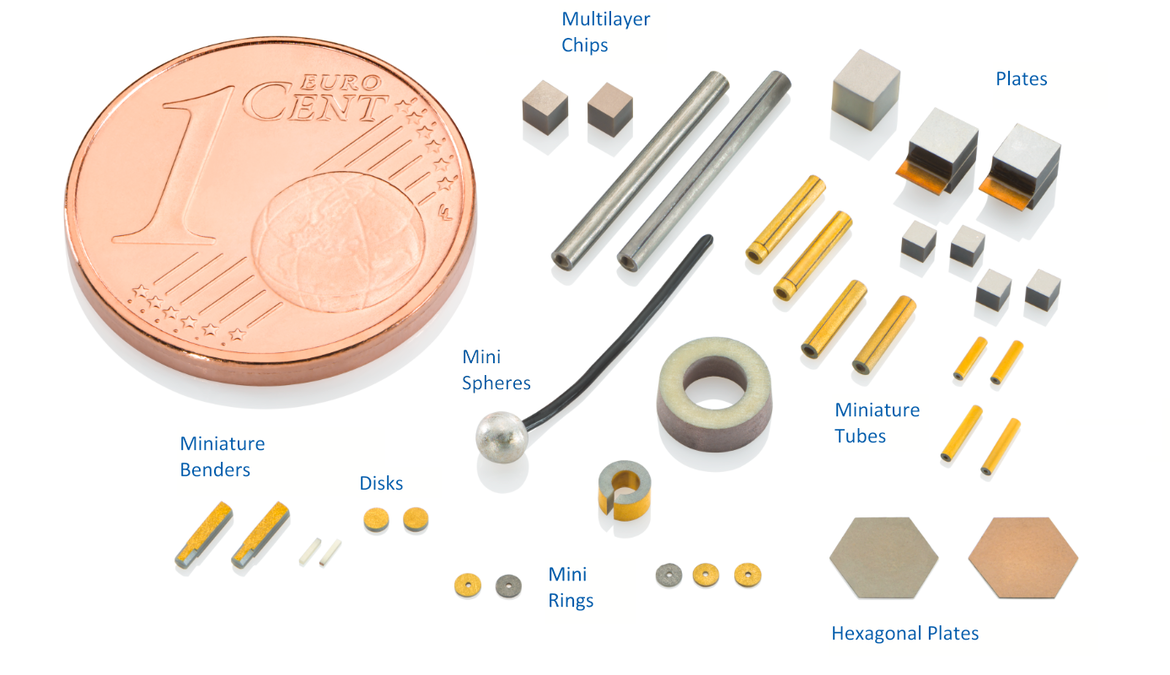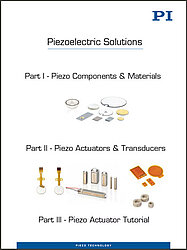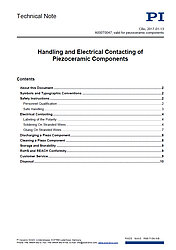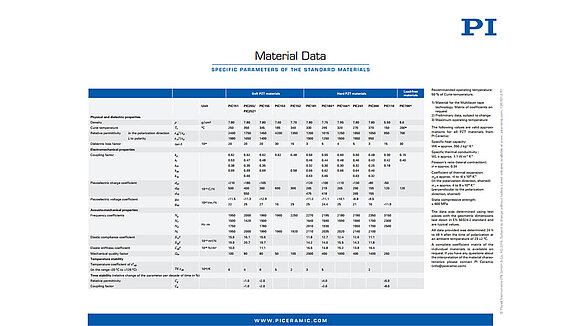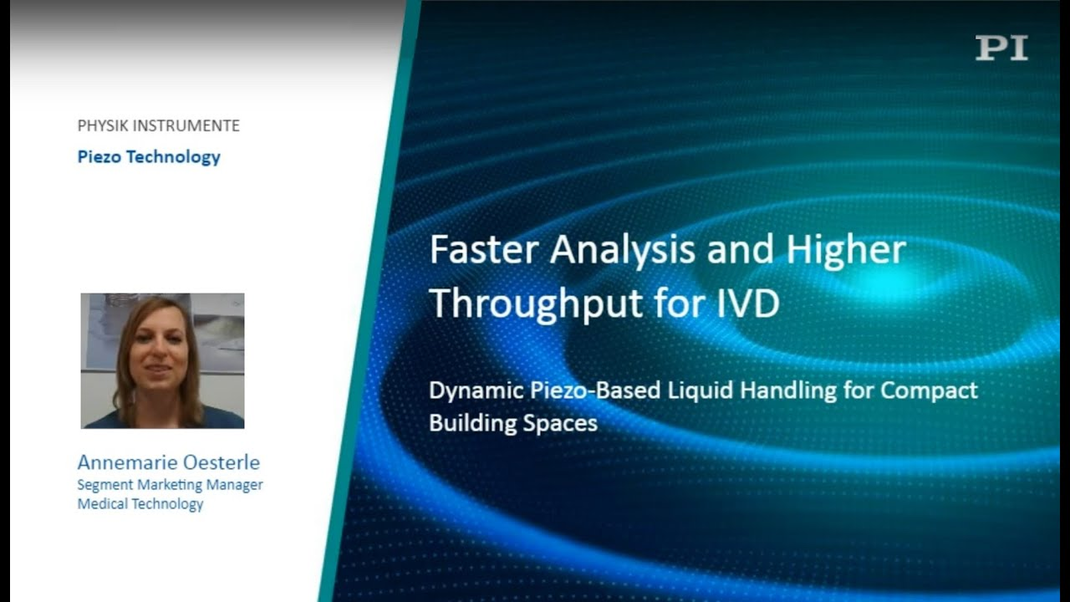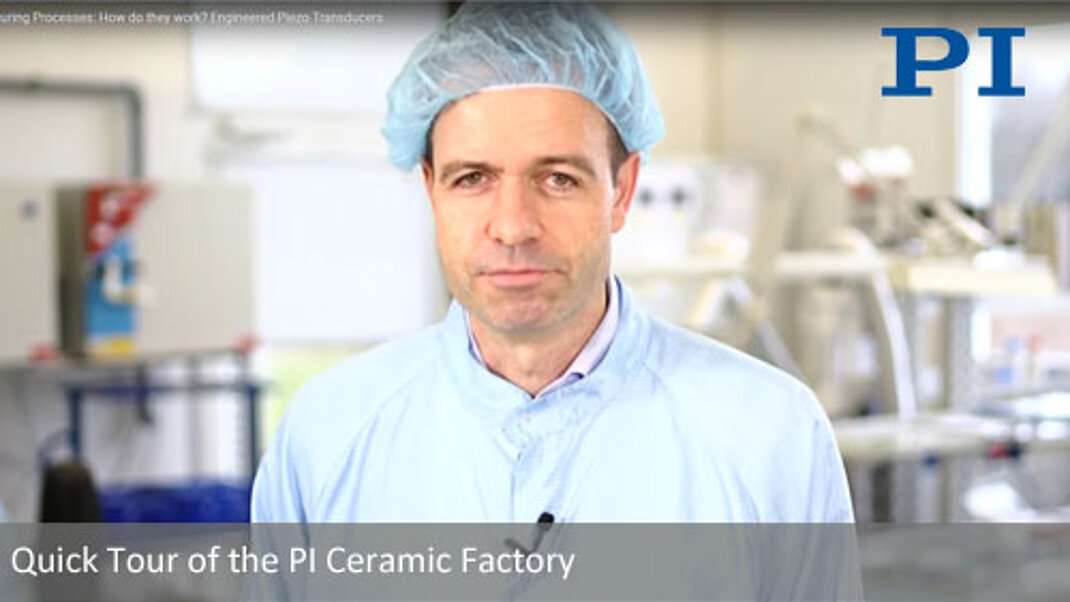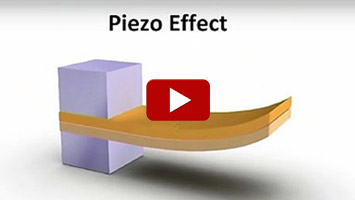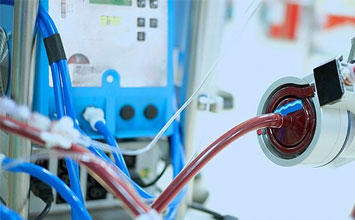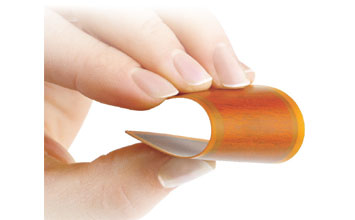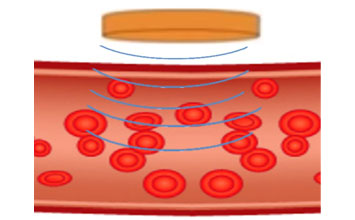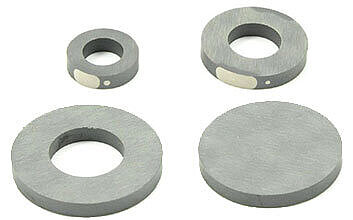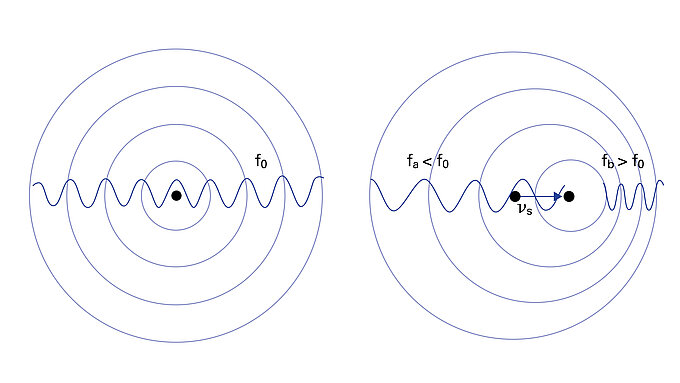PI Ceramic (PI’s piezo materials and piezoelectric components design and manufacturing division) is a supplier of high-quality piezoelectric ultrasound transducers, piezo ceramic components for piezo sensors, and elements made from PZT and lead free material formulations. Piezoelectric ceramics are part of the electroceramic group of materials which cover electrical, mechanical, and magnetic properties.
A piezoelectric transducer converts electrical energy into mechanical energy and vice versa; its operation range can cover DC to high frequency of several MHz. For ultrasonic transmitting (frequency above the human hearing range) applications, piezo ultrasound transducers are operated in resonance, with typical resonant frequencies between 200kHz and 10MHz. Piezo sensors pick up the slightest pressure fluctuation and convert them into electric signals.
Component Types and Applications: Sensing and Actuation
PI Ceramic manufactures PZT components, including tubes, rings, plates, disks, and spheres that can be used in applications such as medical ultrasound technologies, level sensing, flow control and measurement, ultrasonic welding and cleaning, bubble detectors, and proximity sensors, echolocation (sonar), etc.
Dimensions and Physical Limitations
The product groups below are available with custom shapes and dimensions, with limits determined by the production tools and minimum dimensions based on physical and technological limits. The minimum thickness or wall thickness of a piezo component is limited by the mechanical strength of the ceramic material required during the machining process. The maximum thickness in the polarization direction is 30mm.
Value Added Assemblies / Integration / Customization
PI Ceramic is experienced in providing value added products by integrating a piezo ceramic component into a customer’s sub-assembly or product. This includes electrical contacting of the piezo elements according to customer requirements, mounting of customer provided components, and gluing or casting of the piezo ceramics. Examples of value-added integrated piezo components»
PI Ceramic has access to state-of-the-art machines and technologies and can ramp up quickly components to provide piezo components in large quantities at short notice.
PI Ceramic also has experience in the design and manufacture of miniaturized piezo transducers with both traditional pressing and multi-layer tape casting technology.
Components with external dimensions below 1mm can be produced. Miniaturized sensor and actuator elements can be found in novel scanning catheter endoscopes or in active implants that regulate the internal eye pressure.
What are Transducers Used For
Transducers are devices that are used to convert electrical energy to mechanical energy or vice versa. One of the most common transducers - voice coils - are used in sub-woofers and most other loudspeakers. Electrical energy is converted into mechanical motion and thus sound waves. Transducers are also used in electric guitar pickups, to convert mechanical energy into electrical energy, then amplified by an electric circuit and reconverted to mechanical energy by a loudspeaker. Modern cars have hundreds of transducers, both sensors and actuators. Every park sensor uses a piezoelectric ultrasound transducer to measure the distance, and in turn, piezoelectric transducers are also often used in turn to alert the operators of an obstacle with a buzzing sound.
Why use Piezoelectric Transducers?
Piezoelectric transducers have a number of advantages over other transducer types. They are based on solid state piezoelectric materials often specially formulated ceramics that will change shape when an electric voltage is applied. This is called the inverse piezoelectric effect. In turn, they will generate an electric charge when a mechanical pressure is applied to the piezoelectric transducer which is also known as the direct piezoelectric effect. This piezo effect was first discovered by the Curie brothers more than 100 years ago. Often these piezoelectric electroacoustic transducers are used in ultrasound sonar echolocation, as distance sensors, as flow sensors, level sensors, and so on. A pair of ultrasound transducers operates in transmitter and receiver mode, and the timing or signal strength can be evaluated and converted into the measured quantity. Some of the advantages of piezoelectric transducers are small size, robustness, wide variety of size, shape and form, zero maintenance, long service life, and ease of control.

